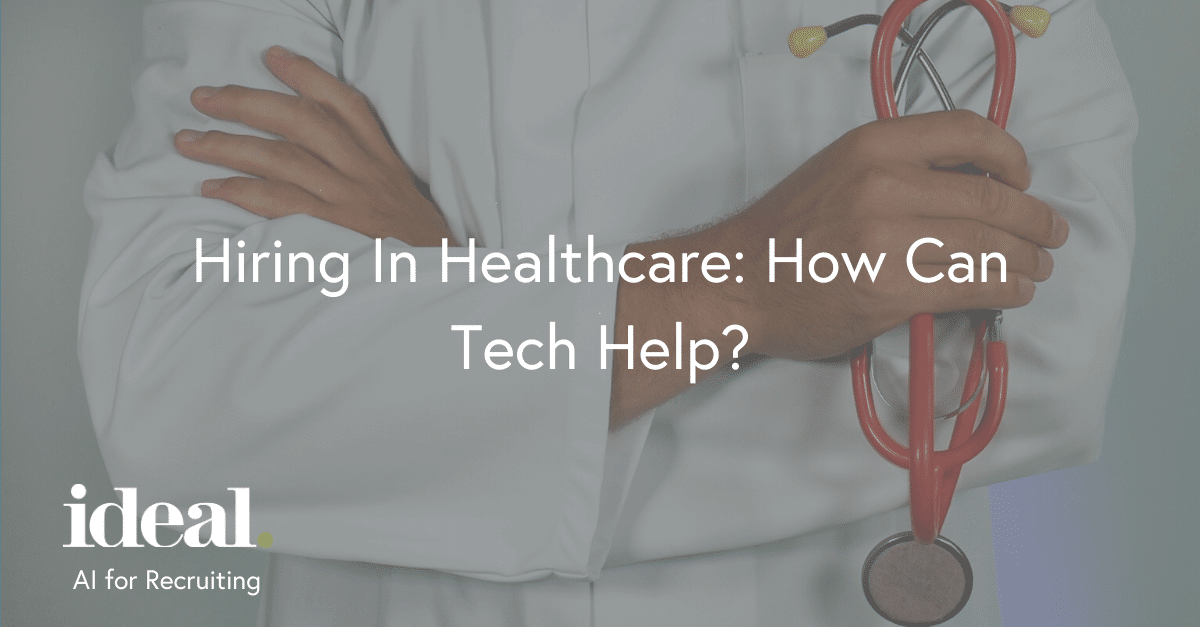We recently wrote a blog discussing healthcare hiring challenges, now let’s talk about how tech can help!
There are some crucial stats to embrace to understand the current positioning of both US and global healthcare, and what that means for hiring. Specifically:
- From 2010 to 2019 (i.e. a full decade), no sector added more net jobs to the U.S. economy than healthcare.
- Overall in the U.S., the sector employs 16 million people, or 11% of the total working population. (Tech, which we discuss constantly, employs about 6%.)
- Post-secondary health topic teachers, home health aides, and nurses are among the 10 fastest growing professions in the U.S. between now and 2028, per the Bureau of Labor Statistics. (Medical assistants, nurse practitioners, and personal care aides are in the top 20.)
- By 2030, the worldwide population over the age of 65 will be 12% of the overall total.
- By 2050, the 65+ number will be 17%.
- Europe is currently the “oldest” region in the world, with 19% currently over 65.
- Global millennial health is declining faster than expected.
Add all this up and it’s easy to see why even if a U.S./global recession does happen, healthcare hiring will keep the labor market going. Why? Because it has to. Look at all these statistics and we clearly need healthcare more than ever — and in the next 10-20 years, we will need it even more.
So how could a hospital or other healthcare organization take full advantage of the modern tech stack to improve their hiring?
Areas of healthcare recruiting where technology can help
Screening: Humans are great at analyzing reactions and emotions in a conversation, but they absolutely cannot do resume screening at scale in the way that an artificial intelligence program can. If you need to fill roles quickly, AI-powered HR screening tools are your best path. Think of the sheer math: Even if a human recruiter only spends six seconds per resume (an often cited stat and not something to aspire to), 200 resumes would still take 1,200 seconds, or 20 minutes. 200 resumes can be done by AI instantly. Some candidates to these roles might not even have resumes, in which case a chatbot can ask them a few quick questions to better assess if they are qualified for the role and provide recruiters with a shortened recommendation list of who to reach out to first.
Communication: This is an essential component of overall candidate experience, and having a positive candidate experience is one major way you stand out to future healthcare superstars. You need a way to make your candidate experience better without stressing out or over-working all the human beings in your recruiting department. Here’s one approach: Humans right now have varied feelings on chatbots, up to and including the VP of Talent Management at Diply. But chatbots can be used in clever ways to communicate more effectively with candidates, especially in terms of FAQ-style questions that can be easily addressed by a bot, freeing up humans working hours to spend more time on interviews and gathering role context.
Integrations: There are so many different software suites that recruiters use now, that integrations are so important. Whatever you do in terms of maximizing your healthcare hiring, make sure any technology partner integrates with the other systems you use. If systems don’t talk to each other, nothing really gets done. That applies big-time to healthcare, where different departments within the same hospital or building might use different technology because their purchase orders are done differently. Everything has to work together or the results aren’t productive.
Rediscovery: If you’ve launched similar healthcare hiring campaigns before, you’ve had candidates who “just missed” the cut. Well, since 2016 we’ve been saying that “the next big thing” in recruiting is candidate rediscovery, where artificial intelligence goes into your “dumb tech” ATS and finds previous candidates who match to current open roles. Reach out to them and see if they’re interested. We talk about “the war for talent” a lot, but in reality, no one wants to go fight a war. You can opt out of the “war” by being smarter about finding people, and that includes finding people already in your system.
Conclusion
Healthcare is a huge deal right now, and will be for many more decades. People are living, and working, longer — and working has been shown to not be great for your health either. We will have, globally, billions of people to care for over the next few decades, and we need capable professionals to do that. That all begins with keeping people interested in those fields, which starts at the teenage level in school, but once people have the education and training, you need to effectively bring them into your organization, and then keep them!
We’ve worked with lots of healthcare organizations, from Ideal Image Medical Spa (which we did a case study on, actually) to one organization in the U.S. that we helped hire 80 new nurses just this spring. If you’d like to know more about how we help healthcare organizations maximize their existing tech stack and recruiters to get the best healthcare talent, let us know!
The post Hiring In Healthcare: How Can Tech Help? appeared first on Ideal.
